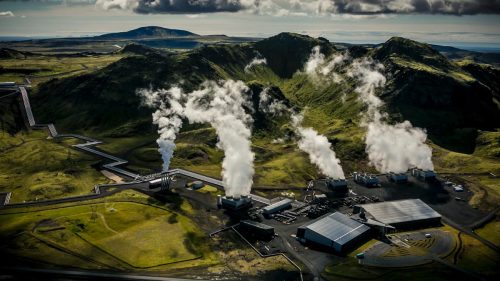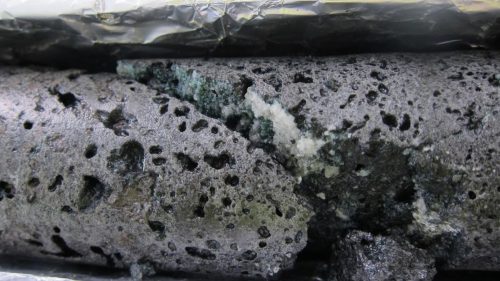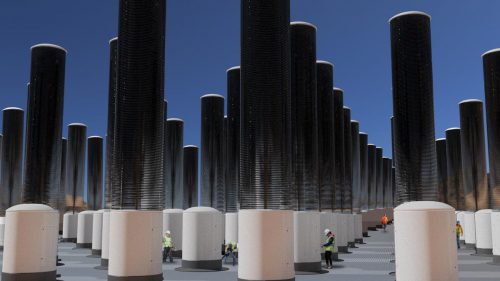One of the challenges facing the world as it fights the climate crisis is how to remove pollution from the air, and store it so that it’s harmless. Today, NFK looks at the promise and challenges of “capturing carbon“.
It’s no secret that the world is struggling to deal with a “climate crisis”. The heavy use of fossil fuels over the last 150 years has caused the Earth to warm up. That pattern will continue and get worse unless we stop the pollution very, very quickly.
And even if we do end fossil fuel use, there’s still way too much of a polluting gas called “carbon dioxide” (CO2) in our atmosphere. Recent reports by scientists make it clear that this CO2 must be removed from the atmosphere and stored.

(Source: KevinMShea [CC BY-SA], via Wikimedia Commons .)
Plants and trees do this naturally. But there’s so much CO2 in the atmosphere that planting trees and protecting forests won’t come close to solving the problem. That means humans need to come up with ways of removing carbon from the air and storing it. This is called Direct Air Capture (DAC).
Carbon Dioxide in the Air
Even though there’s too much carbon dioxide in our atmosphere, CO2 is still just a small part of the gases that make up air. If you could somehow take a bag of air, split it into the gases that make up the air, and put those gases into 2,500 tiny bags, only one of those tiny bags would have carbon dioxide in it. That’s what DAC technologies need to remove.

(Source: Carbfix.)
The science of removing carbon from the air is hugely challenging, and it’s still fairly new. But there are already about 18 working carbon removal factories around the world. Some store the CO2 they remove. Others turn it into other products, including fuel. So far, though, they can’t remove much carbon.
Last September, the world’s largest carbon capture factory opened in Iceland. Called Orca, the project is run by Climeworks, which works on capturing the CO2, and CarbFix, which handles storing the carbon in rocks deep underground. The factory can remove up to 4,000 metric tons of CO2 a year.

(Source: Carbfix.)
Though the Orca plant represents huge progress, there’s a very long way to go. Experts say that by 2030, we need to be able to remove 85 million metric tons of CO2 from the air. It would take 1,000 factories like Orca over 20 years to remove that much. Factories that can remove even more CO2 are being planned, but it will take time for them to be built.
Until recently, scientists working on capturing carbon had a hard time finding support for their research. Now, because of the crisis, there are many scientists working on the problem, and many companies willing to pay for it. Governments worldwide have promised nearly $4 billion to develop carbon capture methods and factories.

(Source: Arizona State University.)
Not everyone is excited about carbon removal. Some people worry that there’s not enough time left for DAC technology to be developed and become powerful enough to make a big difference. Others worry that focusing on removing carbon could take attention away from more important climate actions, like switching from fossil fuels to renewable energy.
It’s certainly true that the world needs to cut fossil fuel use. But experts say that the world also needs to pull carbon out of the air. The trick will be for governments and companies to do both.
